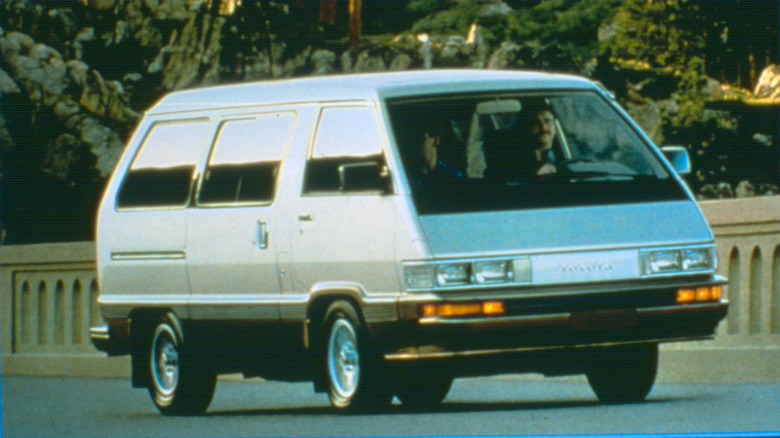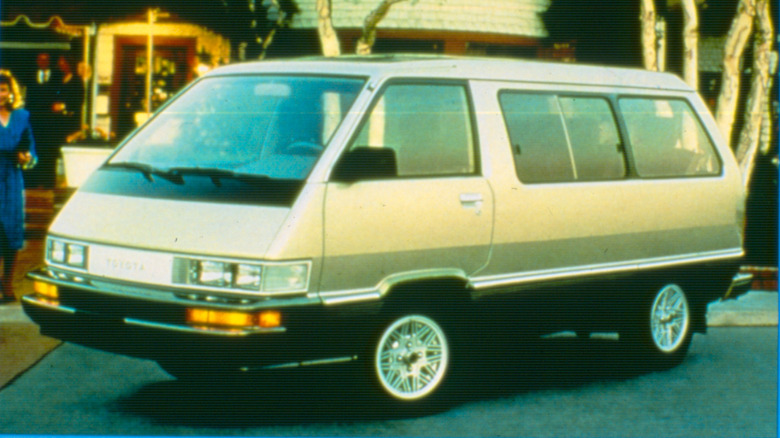This 80s Toyota Van Had A Strange Feature You Won't Find In Your New Car
The early 80s up to the late 1990s marked the minivan era. Chrysler introduced America's first minivan, the Dodge Caravan/Plymouth Voyager, in 1984 and kickstarted Uncle Sam's love affair with the humble people carrier. In that same year, Toyota unleashed the Van in North America. Back then, Toyota was still finding its grasp in the American market, so it gave the Van some unique features to draw buyer attention.
The Toyota Van (also called the Toyota MasterAce Surf or Space Cruiser in other markets) has a quirky front-mid engine layout, meaning the engine compartment is below the front driver's seat. Similar vans from the same era (like the US-bound Nissan Van or Nissan Vanette) had the same engine layout, and servicing meant lifting the front driver's seat like a car hood to access the engine bay.
Powering the Toyota Van is a 2.0-liter four-cylinder gas engine with 90 horsepower. All that kick goes to the rear wheels using a five-speed manual transmission, enabling a zero to 60 mph acceleration of – hold your breath – 14.2 seconds. Of course, the Toyota Van is not about outright speed, but it scores points for having one of the coolest standard features in a new car.
Care for some ice?
The Toyota Van from 1984 to 1989 came with an optional cooler box and icemaker. What's quirkier is the standard spill-proof ice trays with the mini fridge, which means you can get ice cubes for your sparkly drinks. The source of all this coolness is built-in aircon refrigerant lines around the cooler box, cold enough to freeze water and make ice.
Oddly enough, East-Asian variants of the Nissan Vanette also came with a mini fridge in the center console, and modern vehicles like the Ford Maverick and Jeep Wrangler have optional compact refrigerators in their factory-approved accessories brochure. Toyota replaced the Van with the Previa in 1990, but the mini fridge got lost in translation.
Admit it or not, having a mini fridge in your car is a great feature, especially during the summer. Now, most high-end luxury cars have a drinks cooler of some form, but we still think carmakers should make it more common in family cars.

